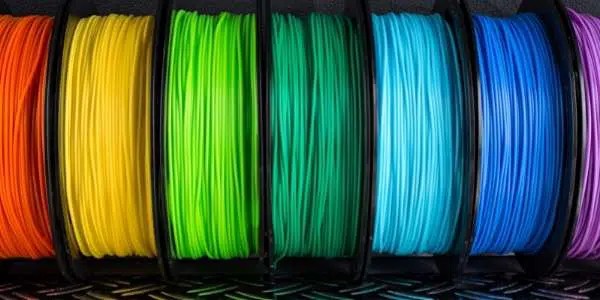Technology, in general, has become more advanced, more accessible, and more affordable. And that’s never been more apparent than with 3D printers, which can be found in homes all over the world. But are they really getting cheaper?
3D printers are getting cheaper, as are their components, and they will continue to decrease in price in the next few years. It used to cost around $2,000 to purchase a 3D printer, but now they can be as cheap as 0. Even mid-range 3D printers cost as low as a few hundred dollars.
This article will delve into the how and why of the price decrease of 3D printers, and hopefully, by the end, it will explain the trends in other areas of the technological field.
Factors That Make 3D Printers Expensive
There are several reasons why 3D printing is considered one of the more expensive hobbies and a costly and complex industry process.
For example, printing materials can be costly, not to mention it’s still a somewhat niche hobby.
So, let’s take a closer look at the costs involved in 3D printing.
Printing Materials
The main reason 3D printing is expensive is its material to print.
Filaments – such as metal, glass, plastic, and resin – are expensive at a lower grade “hobby” level but even more pricey at a higher grade of commercial production. This is mainly because these materials require extra processing before being used for production.

Additives Used To Strengthen Printing Materials
Additives contribute considerably to the quality and stability of printing materials.
These additives include but aren’t limited to:
- Dyes
- Flame retardants
- Antioxidizing agents
- Stabilizers
- Plasticizers
Processing and Packaging of Materials
Processing 3D printing materials isn’t expensive, but the processing takes specialized pieces of equipment that cost quite a fair sum of money.
These pieces of tech are used for the process of extrusion, which is completed not in bulk but in individual threads (spooling).
This increases packaging and shipping costs considerably.
The Size of the Market
3D printing is growing in popularity, but it’s still a relatively niche market.
Increased demand means increased supply, which means lower cost – so the more popular the industry becomes, the cheaper it will become to participate in.
However, there’s still a long way to go until 3D printing is a commonplace artform accessible to everyone.
Why 3D Printing Is Getting Cheaper
Funnily enough, all of the reasons why 3D printing is expensive in the first place are also why it’s getting cheaper.
New Filaments
New filaments are being produced for less, and interfaces are becoming more accessible and intuitive, allowing even beginner artists to print full models.
Not only are materials and filaments getting cheaper, but they are also becoming more environmentally friendly. This is down to a move towards turning recycled plastics into filament rather than making new high-density filaments.
3D Printing Is Becoming More Commonplace
3D printers are increasingly being used for commonplace purposes like phone cases and figurines.
The initial cost of buying a printer can be considerable, but printing your own chess set can cost as little as a single spool of PLA, which is as low as $20.
Further to this, 3D printers are being used for more technical purposes like bone replacements and cosmetic dentistry.
It also becomes cheaper to 3D print your own printer parts than to buy them!
Why the Price of Tech as a Whole Is Dropping
You can’t remove 3D printing from the world of tech since almost every aspect involves software and hardware.
For example, you can’t print without slicer software, and you can’t build a model without the proper nozzles.
So, as software becomes more advanced, as will printing. Similarly, as more and more companies offer the hardware needed for 3D prints, it’s becoming cheaper to buy spare parts.
Less Innovation, More Choices
When tech, especially handheld tech, was still in its infancy, breakthroughs were made every other year.
In 2022, we already have a steady stream of smartphones, medical equipment, desktop computers, and every other piece of technology we can think of – but it isn’t changing much. In fact, the only significant advancements being made are in particular industries, such as Artificial Intelligence.
Consumer items are cheaper than ever before, and there is no sign of this changing as industry giants continue to lower prices for the average person to afford.
Additionally, whereas a select few companies specialized in marketing tech to the masses in the past, ordinary people are now spoiled for choice. Therefore, the industries must make their prices as attractive as possible to compete.
In a globalizing world, trade between nations is also becoming more common and even expected; thus, import and export costs are lowering, and international competition contributes to reducing prices.
Moore’s Law
Moore’s Law states that the number of resistors on a microchip or dense integrated circuit doubles every two years. Since the idea was conceived, the multiplication period has gone from two years to 18 months.
However, this decline in the multiplication period isn’t exponential anymore as our technology and its designs grow in complexity.
The fact is that chips are getting smaller, tech is shrinking in size, and smaller tech is cheaper tech. Although this won’t be the case forever, for now, we can rest assured Moore’s Law is working in favor of the consumer.
Cheaper, More Sustainable Manufacturing
As stated before, the more something is produced, the cheaper, more efficient, and more sustainable it is to create moving forward.
As we produce technology on a larger scale, we rely more heavily on programming machines to labor in our place – these are more precise, so there is no need to factor in the cost of errors and material waste.
As a result, we also cut costs on paying workers and save valuable production time.
Conclusion
3D printing is still a niche art form and means of production, at least for the average consumer.
It is getting cheaper, that much is for sure, but 3D printers are not a wholly household item yet. There’s still a long way to go before this piece of tech is readily available to the public for a reasonable and affordable price.
Regardless of the industry’s current state, there is a comfort to be had in knowing that, albeit slowly, we are well on the way to making 3D printing an accessible means of production.
- Written by:
- Ben
- Last updated:
- 11/11/2023
About Ben
I started 3D printing since 2013 and have learned a lot since then. Because of this I want to share my knowledge of what I have learned in the past years with the community. Currently I own 2 Bambulab X1 Carbon, Prusa SL1S and a Prusa MK3S+. Hope you learn something from my blog after my years of experience in 3D printing.

